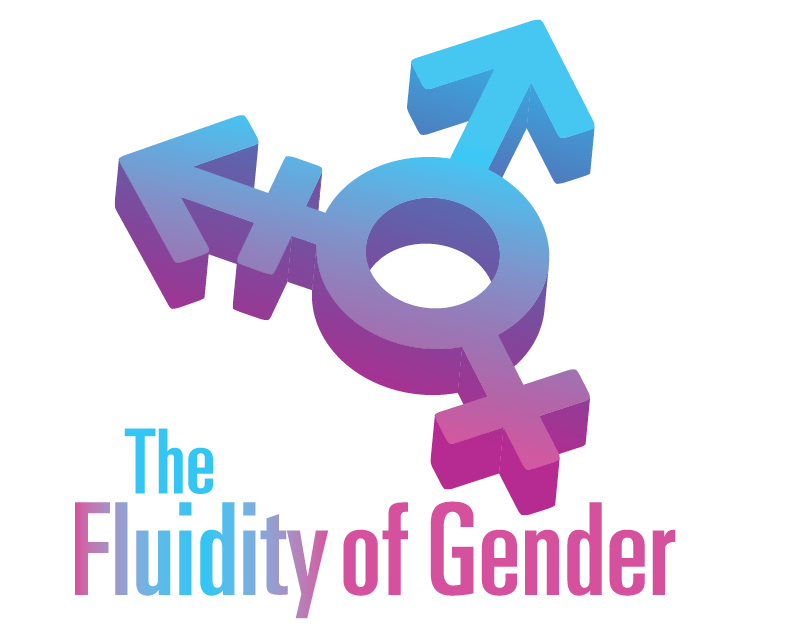The Fluidity of Gender

‘It’s a girl!’ the doctor exclaims. Your parents are ecstatic, they have always wanted a girl. Over the next few weeks family and friends bring over gifts for you, the new baby. Pink dresses, dolls, a pretty lace pram. From the moment you are born, a culturally defined gender identity is assigned to you.
In elementary school, the teacher makes teams, “boys against girls” and you feel a strong urge to break free of your gender role and join the boys team. Participating in school activities has been difficult due to the gender segregation that has made you feel uncomfortable and defeated.
Within society, it is assumed that people are exclusively male or female. When you need to use a public washroom, you only have two distinct choices. Yet, there are many groups of people who don’t exclusively identify as one gender or the other. In many ways, gender lies along a continuum and the way we identify with our gender roles and identity is constantly changing.
Someone who is transgender experiences discomfort with the gender that was assigned to them at birth, and when this discomfort is extreme and constant it is called gender dysphoria. Gender dysphoria causes feelings of distress due to constant biological and social reminders of being in the wrong body. Transgender individuals often experience a disconnection between their body, mind and soul.
Someone who identifies as transgender can use hormones and/or surgery to better align their self-identification of gender with their physical characteristics of gender.
Try picturing yourself in the mirror as the opposite gender. Imagine having to live as the opposite gender even though you feel that you have a strong connection with your gender identity. Now imagine how you would feel if you were constantly being pressured to be something you are not. This pressure to be “normal” can force a lot of transgender individuals to keep their gender identities a secret. Shouldn’t everyone be able to live as their true selves?
Gender cannot solely be based on biological factors. Having a penis or a vagina does not make someone a man or a woman. Gender is a way to categorize people but it should be based on how a person feels inside instead of what is in their pants.
Resources
McMaster Pride Community Centre
Provides access to books and multimedia on various LGBTQ topics, as well as certain trans centered events, such as ‘trans friendly swims’.
Email: pride@msu.mcmaster.ca
Phone: 905-525-9140 ext. 27397
Facebook Search: MSU Pride Community Centre
McMaster Student Wellness Centre
Provides non-discriminatory health, counselling and education services to trans people including: referral for hormone therapy, mental health support and connections to community groups.
Website: wellness.mcmaster.ca
Phone: 905-525-9140 ext. 27700
Email: wellness@mcmaster.ca
The Well: LGBTQ Community Wellness Centre of Hamilton
Provides a ‘Trans 101’ training workshop for organizations, a trans peer support group and access to a trans advocate and access worker.
Website: www.thewellhamilton.ca
Phone: 905-525-0300
Email: info@thewellhamilton.ca
Sherbourne Health Centre
Provides programs and services for trans people such as: mental health support, support groups, hormone therapy, workshops and links to community groups.
Website: www.sherbourne.on.ca
Phone: 416-324-4103
Email: info@sherbourne.on.ca
Transhealth
Provides information and resources on topics such as aging, hormones, transitioning and sexuality.
Website: www.trans-health.com
Rainbow Health Ontario
Province wide program that works to improve the health and the well being of LGBT people in Ontario through education, research, outreach and public policy advocacy.
Website: www.rainbowhealthontario.ca
Phone: 416-324-4100
Source
